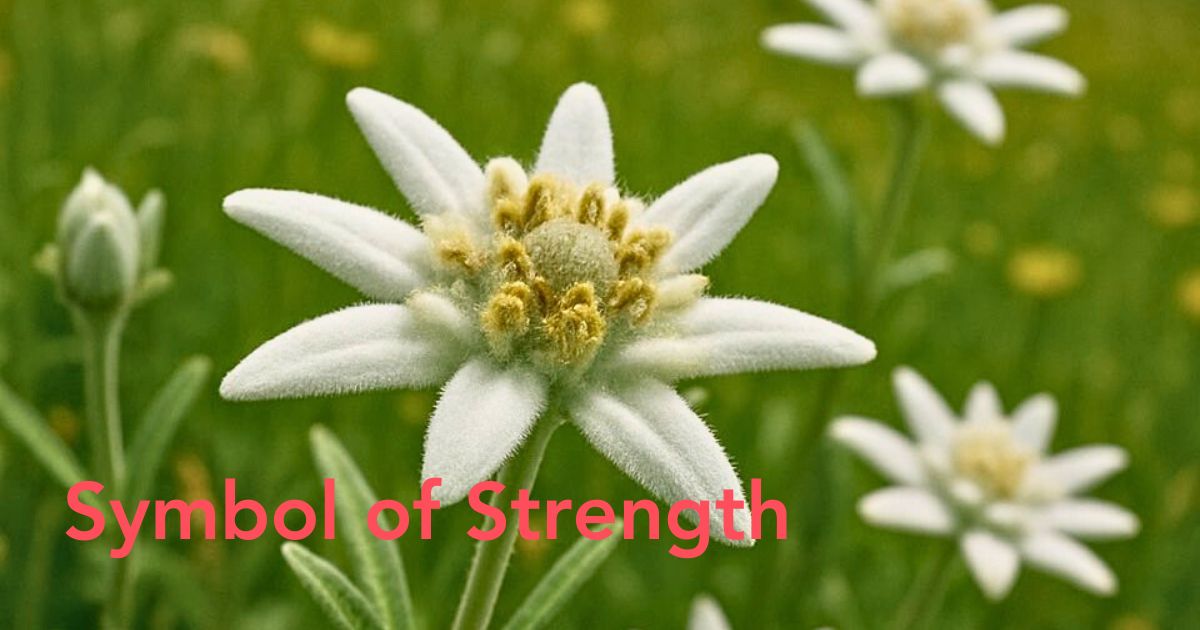The Edelweiss flower carries more than just a name associated with mountains and myth. It’s a symbol of love, resilience, and national identity—one that remains significant across generations. While it may be rare in nature, the Edelweiss remains deeply embedded in cultural, botanical, and even skincare conversations today.
This article explores the Edelweiss flower from every angle—its meaning, symbolism, visual identity, historical presence, and practical growing information. Whether you’re a florist, grower, or someone who simply wants to understand what makes this plant iconic, you’ll find the facts you need here.
What Does an Edelweiss Flower Look Like?
The Edelweiss flower is immediately recognizable by its unique form and texture. It features star-shaped white bracts that resemble petals but are specialized leaves. These bracts are thick and felted, helping the plant retain moisture and reflect harsh UV light in its native high-altitude environments. At the center of each star, tiny yellow florets form a compact cluster that gives the flower its botanical completeness.
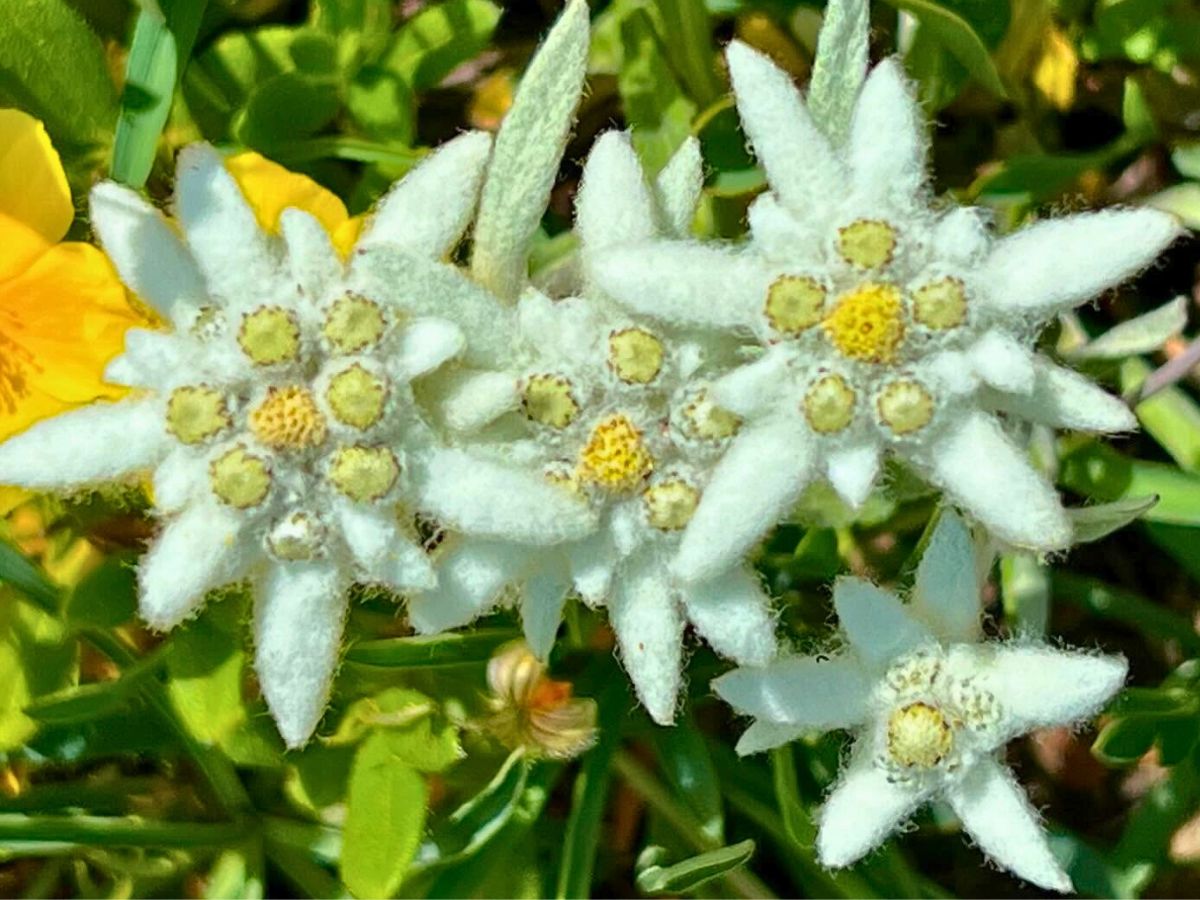
Its appearance is often described as soft, silvery, and woolly—adaptations that make it capable of thriving where few other flowering plants survive. The shape of the bracts inspired the scientific name Leontopodium nivale subsp. alpinum; 'nivale' meaning 'lion’s paw' in Greek. Most Edelweiss flowers measure between 3 and 10 centimetres across and grow close to the ground in clumps.
Where Does the Edelweiss Flower Grow?
The natural habitat of the Edelweiss flower spans mountain ranges across Europe and parts of Asia. It grows at elevations of 1,500 to 3,400 meters, most notably in the Swiss, Austrian, and German Alps. Smaller populations also exist in the Pyrenees, the Carpathians, and even remote areas of the Himalayas.
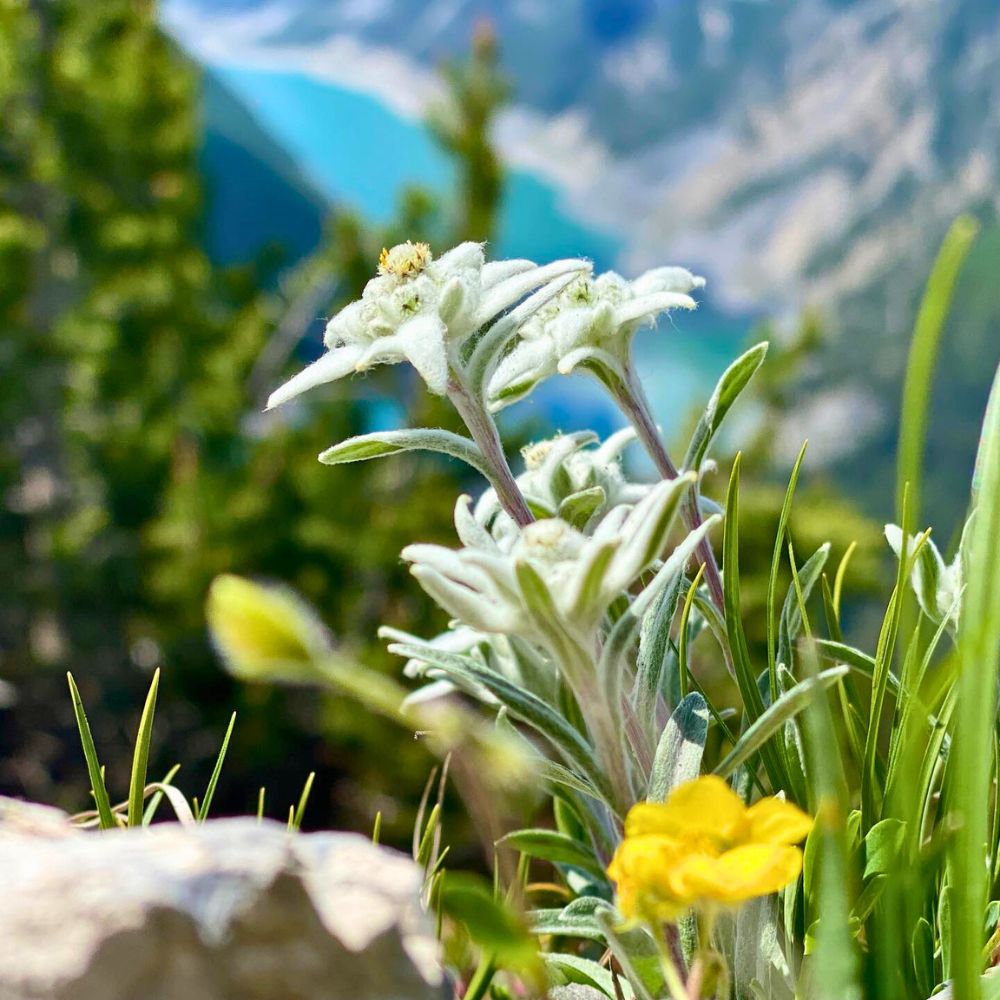
Edelweiss thrives in rugged terrain, typically settling in rocky outcrops, gravel beds, or alpine pastures. The plant prefers calcareous, well-drained soil and full sun exposure—conditions often found on limestone mountain ridges. These harsh environments have shaped its compact, protective structure. Although its wild population declined in the early 20th century due to overharvesting, cultivation has helped maintain its presence, both in the wild and in controlled horticultural settings.
Edelweiss Flower Meaning and Symbolism
Throughout European history, the Edelweiss flower has served as a marker of loyalty, love, and moral purity. In the 19th century, young men would often hike treacherous alpine paths to collect Edelweiss flowers as romantic offerings. Bringing back a fresh specimen was seen as proof of devotion and courage—earning the flower a legendary place in alpine folklore.
The Edelweiss flower’s symbolic reach expanded when it was embraced by military units, particularly in the Austro-Hungarian Empire. Emperor Franz Joseph I wore it on his uniforms, while Empress Elisabeth of Austria (Sisi) was frequently adorned with Edelweiss jewelry and embroidery. By the early 20th century, Edelweiss had become a cultural emblem in Germany and Austria, featured on coins, stamps, and traditional Alpine garments.
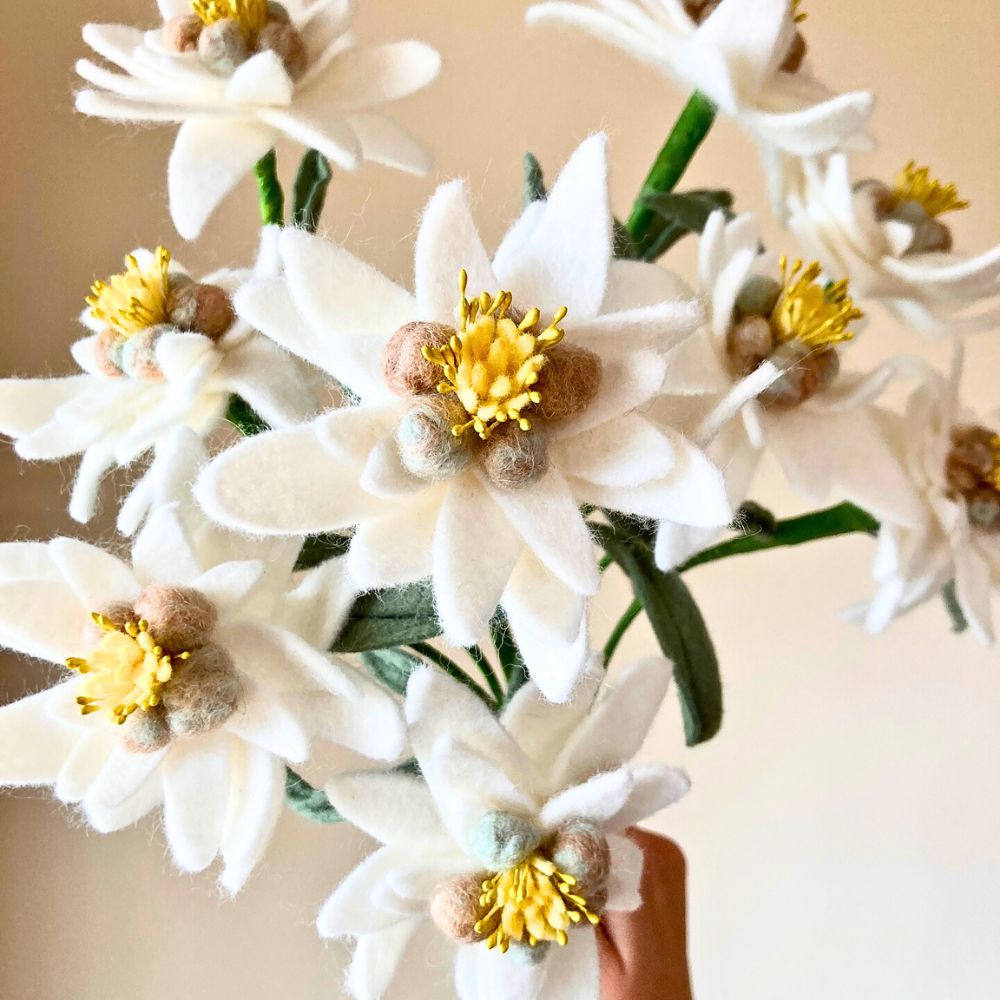
The flower’s name in German—Edelweiß, meaning 'noble white'—reflects its purity and elevated status in the cultural consciousness. It remains the national flower of Switzerland and continues to be associated with alpine bravery, natural beauty, and national pride.
Edelweiss Flower Tattoo Meaning
In contemporary culture, the Edelweiss flower has also found symbolic expression in tattoos. It’s often selected by individuals who resonate with its deeper meaning of inner strength, resilience, and heritage. For many, it acts as a visual connection to alpine ancestry or a love for mountain environments.
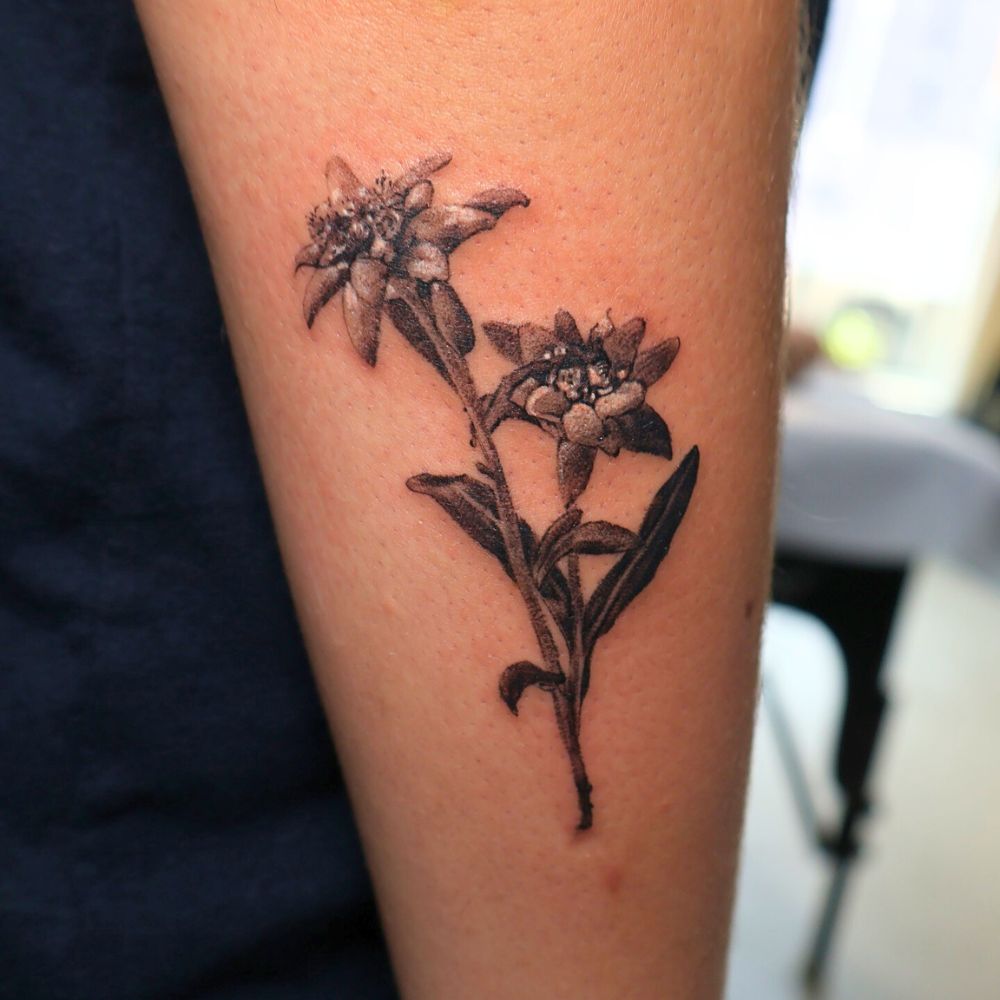
Tattoos featuring the Edelweiss flower frequently include clean outlines of its star shape, often paired with text or motifs like mountain peaks, compasses, or hiking gear. These designs reflect personal journeys—literal or metaphorical—and are chosen less for decorative value and more for their storytelling weight.
How to Grow Edelweiss Flower at Home
Despite its reputation as a mountain-dwelling species, the Edelweiss flower is surprisingly adaptable when grown under the right conditions. Gardeners in temperate climates can cultivate Edelweiss from seed, provided that the plant’s need for cold temperatures and well-drained soil is respected.
The ideal growing medium is gritty, alkaline soil with good drainage—similar to its natural limestone habitat. Seeds should be started indoors during late winter, typically 6 to 8 weeks before the last expected frost. To encourage germination, the seeds benefit from a cold stratification process. This involves placing them in a moist paper towel or seed tray inside a refrigerator for two to three weeks to simulate natural winter dormancy.

Once germinated, seedlings can be transplanted outdoors into raised beds, rock gardens, or containers. Edelweiss prefers full sun and dry conditions, making it an excellent fit for xeriscaping or alpine-themed gardens. Once established, it requires minimal intervention and generally blooms in its second year of growth.
Edelweiss in Jewelry, Necklaces, and Cultural Artifacts
The Edelweiss flower’s symbolic weight made it a natural element in traditional jewelry and costume design throughout the Alpine regions. By the mid-1800s, Edelweiss motifs were widely used in brooches, pendants, and hatpins—often as sentimental gifts or tokens of affection. These pieces were commonly made of silver, brass, or hand-carved wood and were passed down through families.
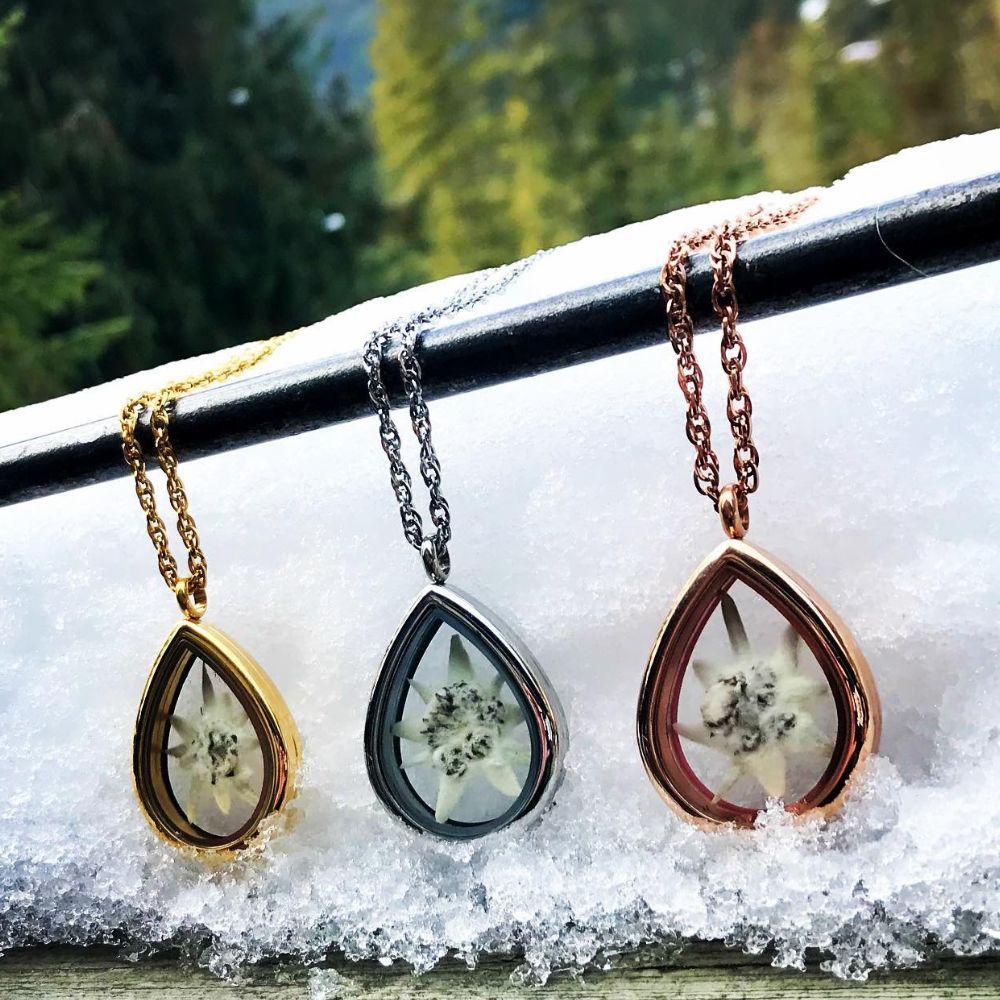
In modern times, Edelweiss necklaces and earrings have been reinterpreted for contemporary wear, while still maintaining their folkloric undertones. Designers working in Switzerland, Austria, and Germany continue to create jewelry inspired by the flower, often blending traditional styles with minimal, modern forms. These pieces appeal to both tourists and locals who see the Edelweiss not just as a plant, but as a living symbol of identity and remembrance.
The Edelweiss Flower in Skincare and Science
In recent decades, the Edelweiss flower has gained scientific recognition for its high-altitude defense mechanisms, many of which translate directly into skin-protective properties. Growing in environments with strong UV exposure, cold temperatures, and wind, the flower produces a range of bioactive compounds that shield its delicate structure from environmental stress.
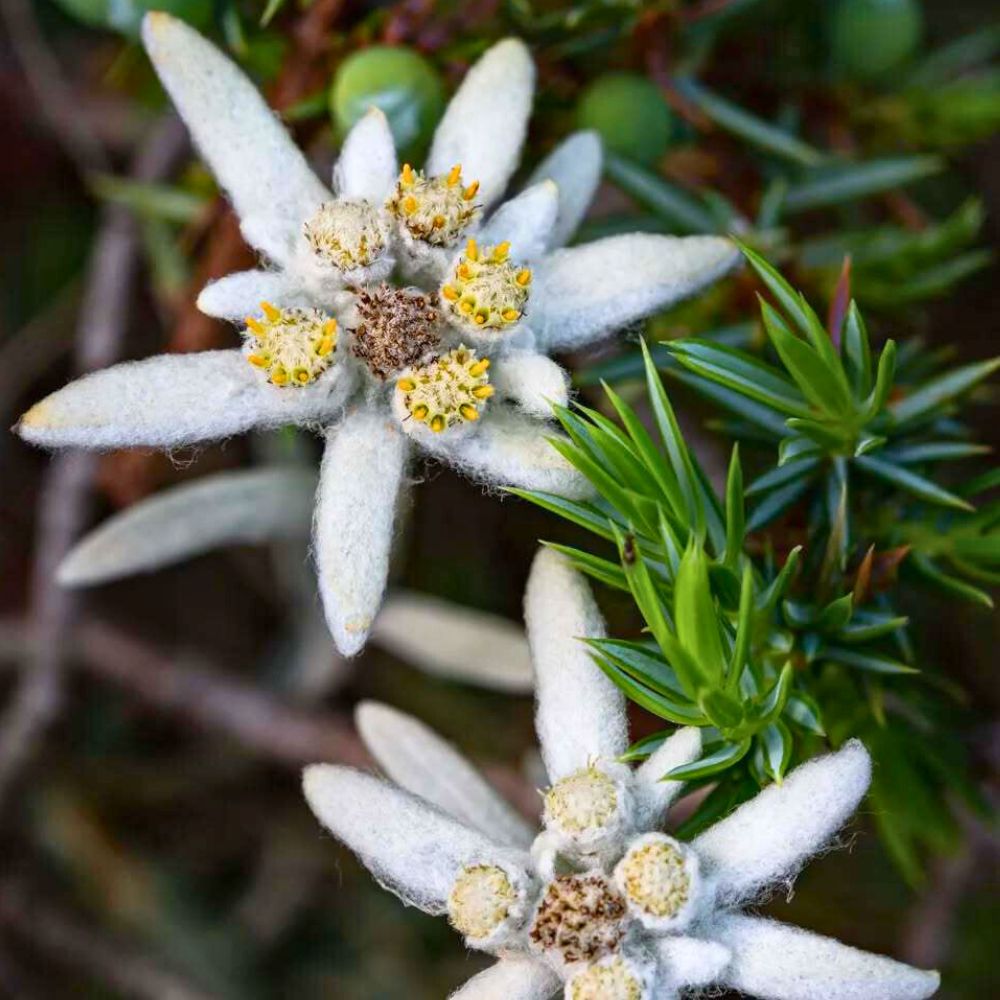
Extracts from Leontopodium nivale contain potent antioxidants, including leontopodic acid, flavonoids, chlorogenic acid, and luteolin. These compounds are known for neutralizing free radicals that contribute to skin aging and cellular damage. As a result, Edelweiss extract has become a sought-after ingredient in anti-aging skincare formulas, especially those designed for people with sensitive or mature skin types.
Beyond its antioxidant power, Edelweiss also exhibits anti-inflammatory and antimicrobial effects. Clinical studies have shown that topical application can help reduce redness, calm irritated skin, and enhance the skin barrier’s ability to retain moisture. Some research even suggests it can improve elasticity and firmness with consistent use over time.
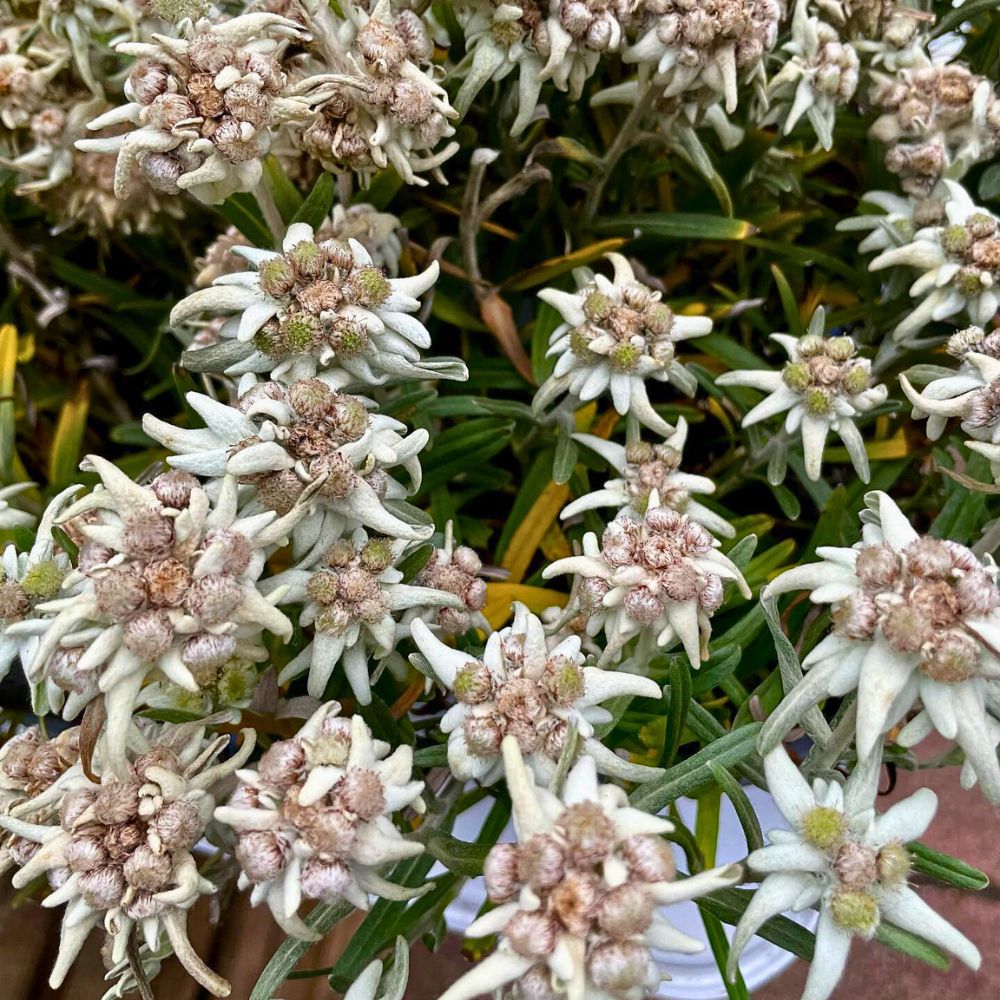
Its reputation as a skincare ingredient is also tied to its origin story. Consumers often associate Edelweiss with purity, alpine clarity, and ethical harvesting practices. Many skincare companies now source Edelweiss extract from cultivated mountain farms in Switzerland under strict ecological guidelines, reinforcing its status as a premium botanical.
Sustainability and Conservation of the Edelweiss Flower
Due to its status as a symbol and collectible plant, the Edelweiss flower experienced a significant population decline in the early 20th century. In response, governments in Switzerland, Germany, and Austria introduced legal protections to restrict wild harvesting. Today, Edelweiss is classified as a protected species in many alpine regions, and conservation efforts have shifted toward cultivation rather than wild collection.
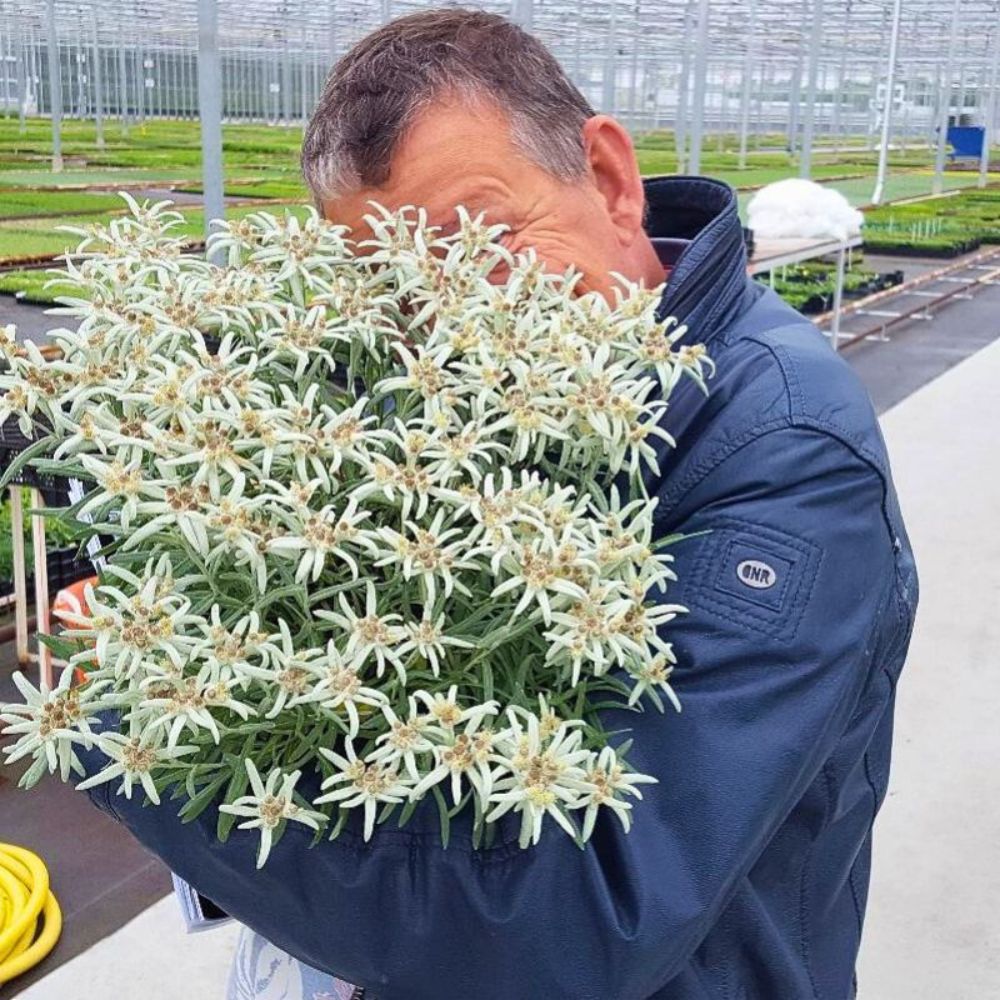
Commercial growers now cultivate Edelweiss specifically for ornamental use, seed production, and skincare extraction. These efforts not only preserve wild populations but also support eco-conscious supply chains that meet increasing demand for alpine-sourced ingredients.
In gardens, Edelweiss offers a sustainable alternative to more water-dependent plants. Its low maintenance and drought tolerance make it a valuable addition to rock gardens or low-intervention landscapes. With continued support from growers and conservation groups, the Edelweiss flower is well-positioned to remain both a cultural icon and a horticultural asset.
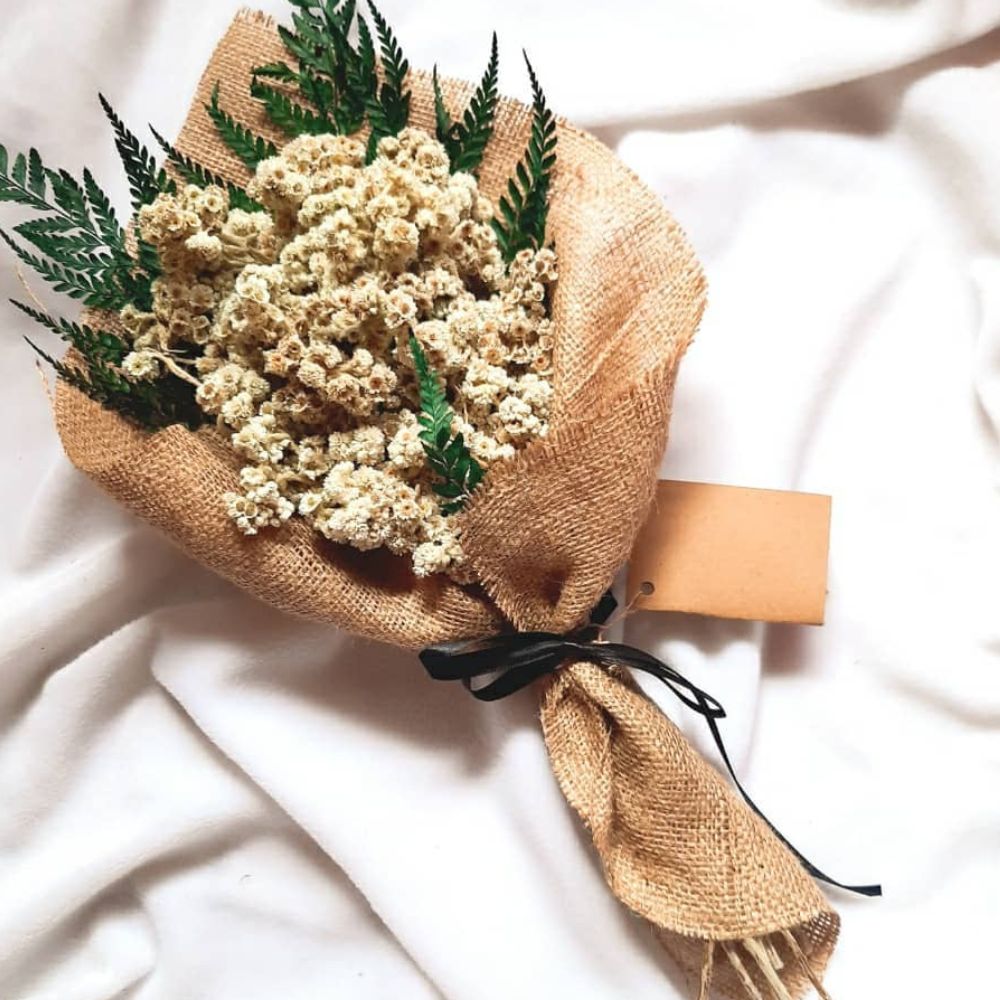
The Edelweiss flower holds enduring power as a cultural, botanical, and commercial presence. From its historic roots in alpine legend to its current role in skincare science and garden design, Edelweiss represents something far more lasting than a fleeting seasonal plant.
Its symbolism—courage, loyalty, and purity—has been passed down through generations, while its natural adaptations now serve a new generation seeking resilience in both skin health and sustainability. Whether appreciated as a flower, a tattoo, a necklace, or an active compound, the Edelweiss continues to resonate for all the right reasons.
Header image by @Nature Photography.

